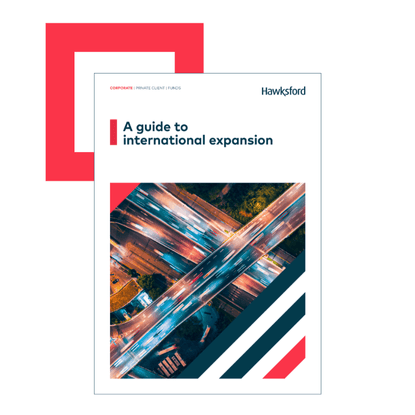Handing over the running of a family business to the next generation can be a difficult process. However, understanding the common challenges and putting plans in place can help ease the transition.
Anyone familiar with the award-winning TV show ‘Succession’ will have seen the Roy family tearing each other apart for control of their entertainment and media conglomerate. Admittedly, this is an extreme version of what happens when it comes to business succession within families.
Yet, while statistics show that family enterprise is the most common form of business ownership in the world, many families find working in such a unique and personal environment quite challenging. This is particularly true when it comes to preparing the next generation to assume control of – or take a larger role in – the family business.
Thankfully, giving consideration to some of the issues that might arise around family business succession planning means that steps can be put into place to make the process as smooth as possible. Here are four common challenges of business succession planning and how they can be overcome.
1. Disparate family goals
As families grow and the wider world changes, the goals and values of family members often evolve and become far more diverse. One family member may want to build the business for future generations, one may want to take the business in a totally new direction, while others may simply want to harvest the existing equity.
Cousins who grew up in different households will usually share some values while being very different in other respects, while even within the same family, siblings can have varied aspirations. Managing these different goals and values, and ensuring that everyone is listened to, can be a significant challenge.
2. Resistance to change
What made the business successful in the past can sometimes get in the way of its future. By nature, successful business leaders tend to be remarkably driven and committed to their ideas, which may make them inflexible and resistant to change.
As much as family goals may change, so the patriarch or matriarch needs to be open to new ideas from the next generation. They may well, for instance, have a better grip on current trends and the use of technology, as well as different working styles from their predecessors.
3. Lack of preparation for next-generation leadership
Succession requires long-term planning, yet it isn’t uncommon for the next generation to be wholly unprepared to take on the running of the business. This could be because the founder is clinging to control, or that younger family members haven't been given the opportunity to develop the necessary skills.
While leadership most definitely requires a particular skillset, it's also essential that family members are given space to explore their own leadership style. A lack of preparation can ultimately mean there is no appropriate heir or successor to take the reins.
4. Conflict among siblings/successors
Differences of opinion are common when it comes to running a business – but add in a family dynamic and things can become far more complicated. On a basic level, siblings can often have very different personalities, but then factor in different values, goals and objectives and conflicts can easily arise.
In order to stop any such conflicts escalating and becoming personal, founders really need to be tuned in to the relationships between family members.
While there is no one secret formula to successively navigating succession in a family business, there are best practices that help families deal with issues both before and after they arise. This involves looking at succession through both a business and a family lens.
Planning at board level
Succession planning in any company – whether family-owned or not – is critical to ensuring continuity when CEOs and owners decide to move on or step down. For owner-managed businesses, such planning is arguably more important in order to ensure that family roles are clearly established.
While founders may be tempted to leave succession until they finally decide to retire, illness or death could throw a business into turmoil if no plans are in place. Therefore, it makes sense for the board – which will likely contain non-family members – to have ratified a way forward so that the business moves ahead with as little disruption as possible.
Planning at family level
It’s vital that family members across the generations reach an agreement about post-succession roles and how the business will move forward. Dependent on the family dynamic, this could be relatively straightforward or massively problematic.
A family council can play a key role here as it allows members to meet regularly and address their needs and any changes – both personal and in business. Similarly, unity can be achieved through the establishment of a constitution where the family’s principles are agreed. This can be as far-reaching as required.
Using external partners and advisers
Where conflict arises, families should consider the use of advisers who can look at any issues independently and with a clear eye. This could be in helping mediate between family members, establishing any personal wealth or business structures, or advising on legal matters.
Such third-parties can play a very distinct role in helping make sure that any conflicts are dealt with and that succession proceeds in the most optimal (and painless) way possible.
Disclaimer: This article is intended for general information only and is not intended to apply to any specific situations or to constitute legal advice.

Updated on



